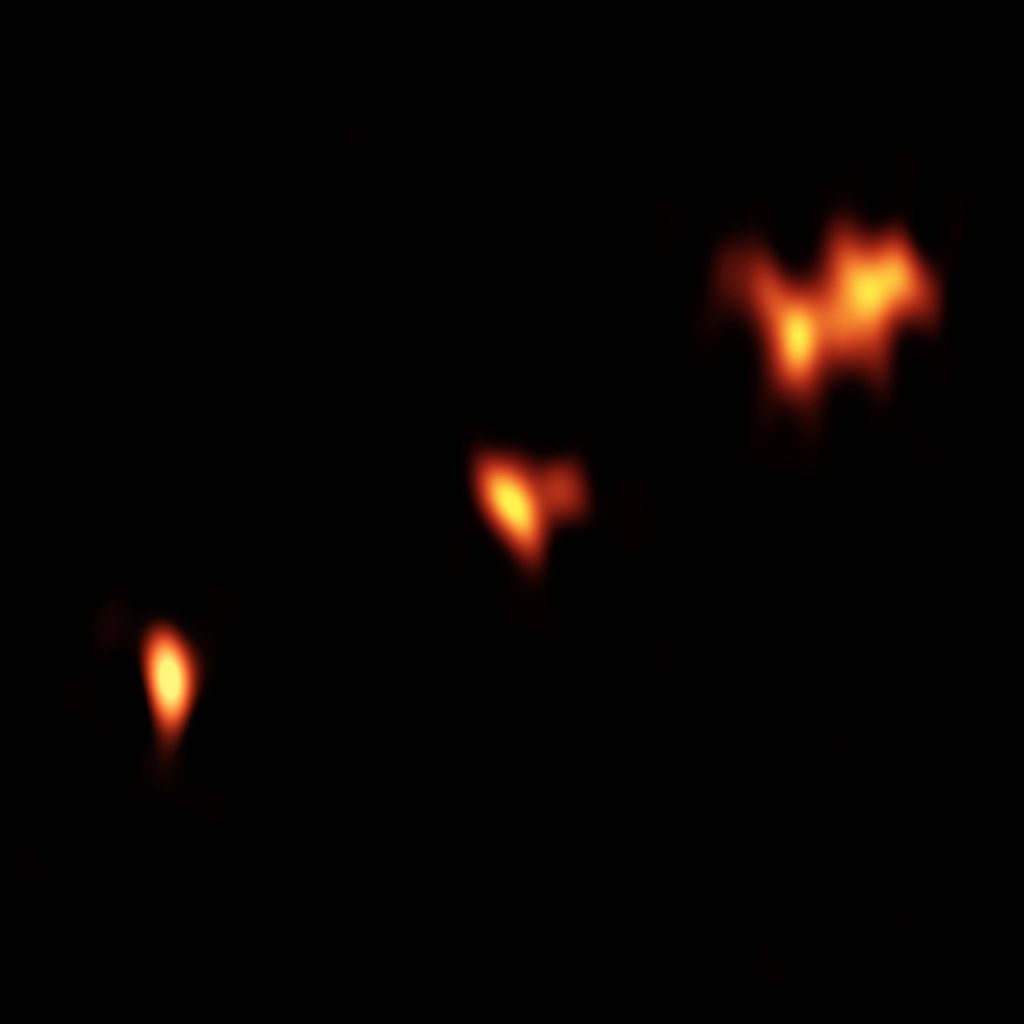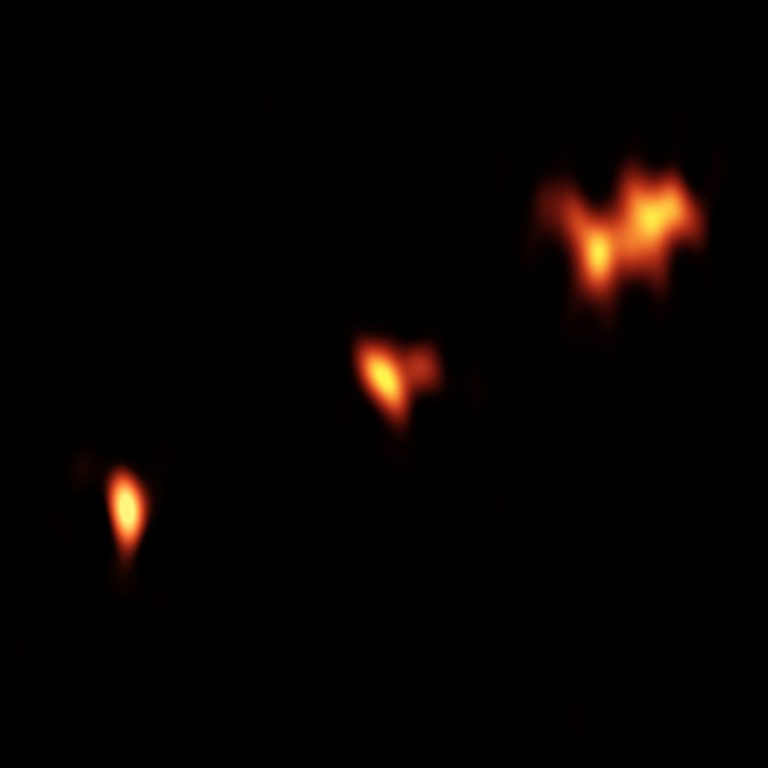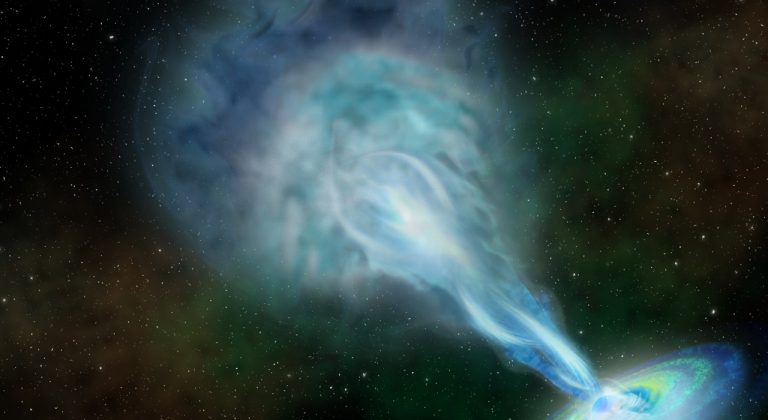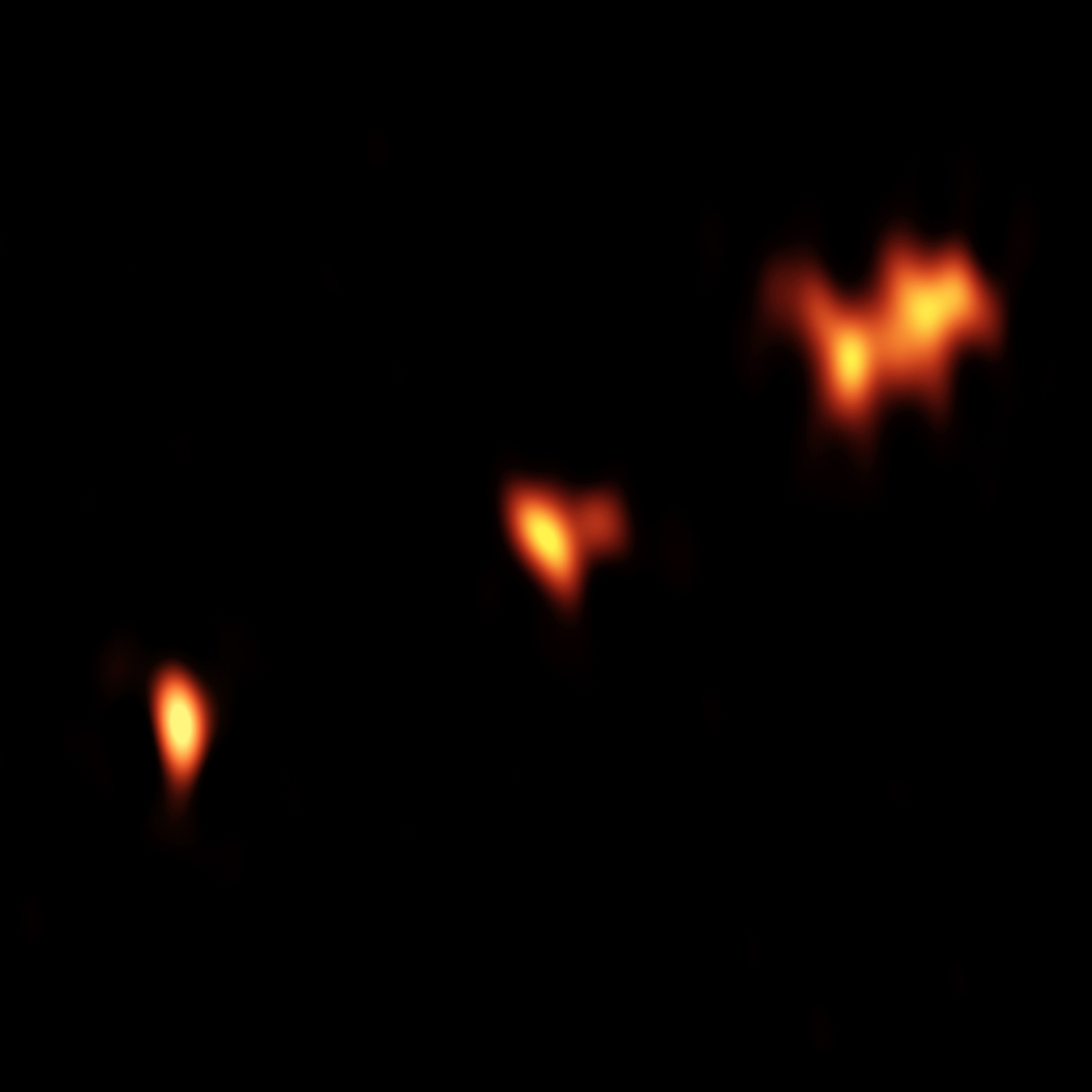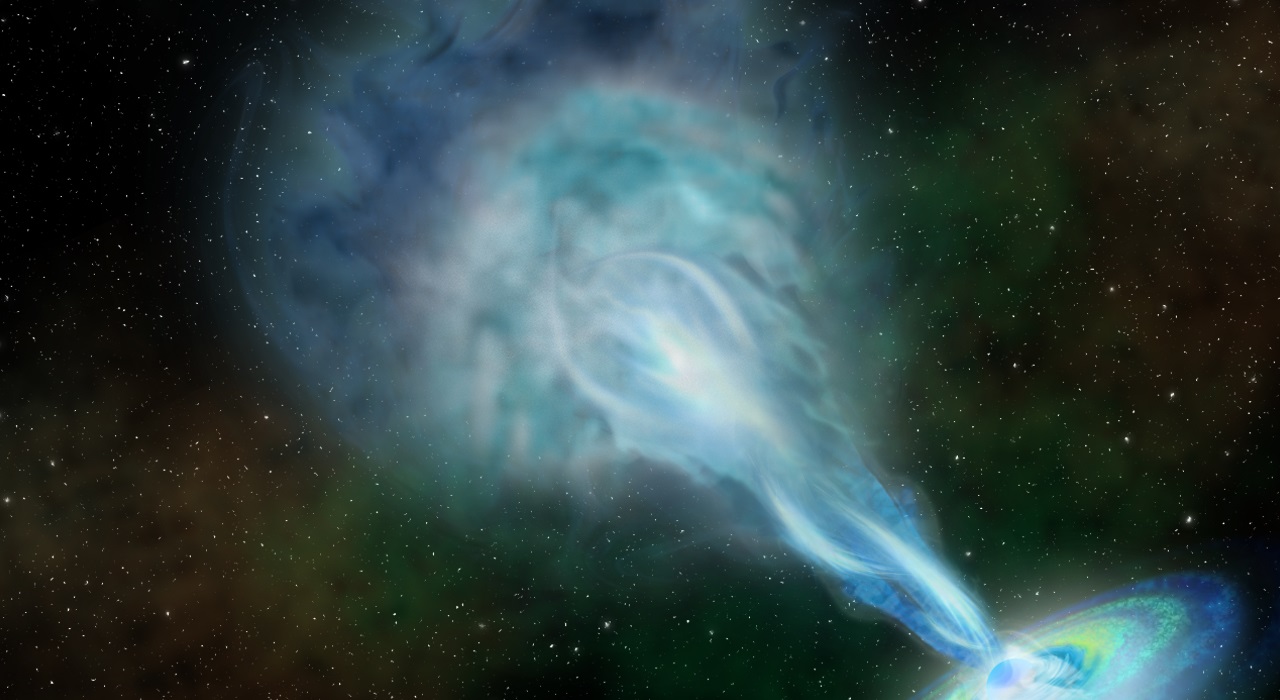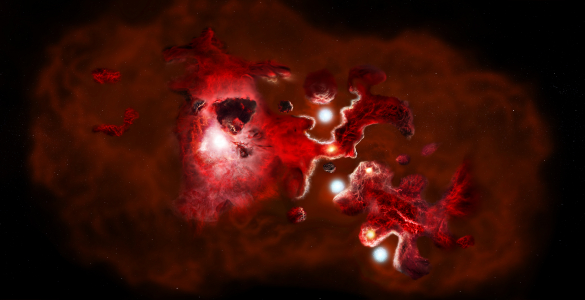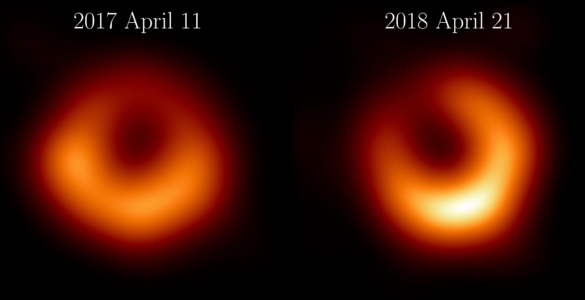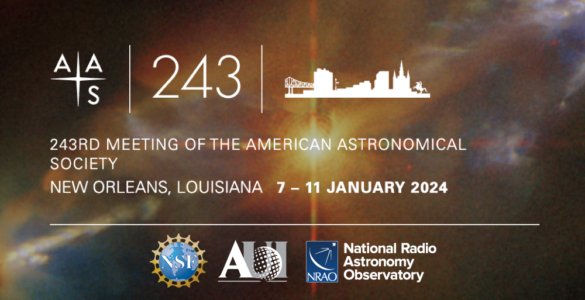Astronomers using the National Science Foundation’s Very Long Baseline Array (VLBA) have made an image revealing tantalizing details of a quasar nearly 13 billion light-years from Earth — an object that may provide important clues about the physical processes at work in the Universe’s first galaxies.
The scientists studied a quasar called PSO J352.4034-15.3373 (P352-15), an unusually bright emitter of radio waves for an object so distant. The extremely sharp radio “vision” of the VLBA showed the object split into three major components, two of which show further subdivision. The components are spread over a distance of only about 5,000 light-years.
Quasars are galaxies with supermassive black holes at their cores — black holes millions or billions of times more massive than the Sun. The powerful gravitational pull of such a black hole draws in nearby material, which forms a rotating disk around the massive object. The rapidly-spinning disk spews jets of particles moving outward at speeds approaching that of light. These energetic “engines” are bright emitters of light and radio waves.
“This is the most detailed image yet of such a bright galaxy at this great distance,” said Emmanuel Momjian, of the National Radio Astronomy Observatory (NRAO).
“There is a dearth of known strong radio emitters from the Universe’s youth and this is the brightest radio quasar at that epoch by a factor of 10,” said Eduardo Banados of the Carnegie Institution for Science in Pasadena, California.
“We are seeing P352-15 as it was when the Universe was less than a billion years old, or only about 7 percent of its current age,” said Chris Carilli, of NRAO. “This is near the end of a period when the first stars and galaxies were re-ionizing the neutral hydrogen atoms that pervaded intergalactic space. Further observations may allow us to use this quasar as a background ‘lamp’ to measure the amount of neutral hydrogen remaining at that time,” he added.
The astronomers said the three major components of P352-15 can be explained in one of two ways. One explanation is that they’re seeing the bright core of the quasar, corresponding to the location of the supermassive black hole itself, at one end, and the two other bright spots are parts of a one-sided jet. The other possibility is that their middle object is the core, and the other objects are jets ejected in opposite directions. Because one of the end objects is closest to the position of the quasar as seen with visible-light telescopes, they consider the one-sided jet to be the more likely explanation.
The one-sided jet explanation raises the exciting possibility that astronomers may be able to detect and measure the expansion of the jet by observing P352-15 over several years.
“This quasar may be the most distant object in which we could measure the speed of such a jet,” Momjian said.
If, instead, the middle object is the core, with two oppositely-moving jets, its small size suggests that it may be very young or be embedded in dense gas that is slowing the jets’ expansion.
Planned future observations will tell which scenario is accurate, the scientists said.
“This quasar’s brightness and its great distance make it a unique tool to study the conditions and processes that prevailed in the first galaxies in the Universe,” Carilli said. “We look forward to unraveling more of its mysteries,” he added.
Momjian, Banados, and Carilli worked with Fabian Walter of the Max Planck Institute for Astronomy in Heidelberg, Germany; and Bram Venemans, also of the Max Planck Institute. The astronomers are reporting their findings in the Astrophysical Journal.
The Long Baseline Observatory is a facility of the National Science Foundation, operated under cooperative agreement by Associated Universities, Inc.
###
Media Contact:
Dave Finley, Public Information Officer
(575) 835-7302
dfinley@nrao.edu
###
Papers
in ApJ: Resolving the Powerful Radio-loud Quasar at z ~ 6:
https://doi.org/10.3847/1538-4357/aac76f
In ApJ Letters: A Powerful Radio-loud Quasar at the End of Cosmic Reionization:
https://doi.org/10.3847/2041-8213/aac511
###






